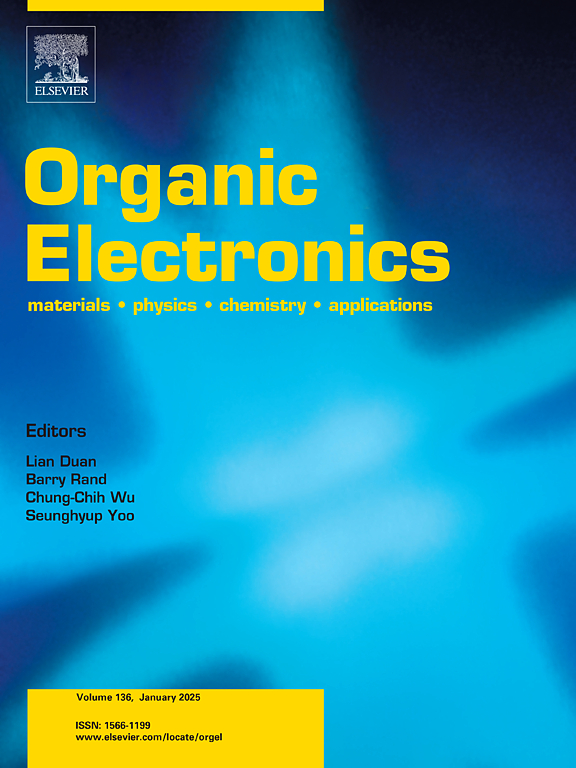An artificial synapse based on organic heterojunction of conducting polymer and molecular ferroelectrics
IF 2.6
4区 工程技术
Q3 MATERIALS SCIENCE, MULTIDISCIPLINARY
引用次数: 0
Abstract
To address the challenges posed by the rapid development of artificial intelligence and big data, various artificial synaptic devices have been developed to overcome the limitations of traditional computing systems. In this study, a two-terminal device using a conducting polymer, poly(hexylthiophene) (P3HT), and a molecular ferroelectric, diisopropylammonium bromide (DIPAB), is fabricated. The incorporation of the ferroelectric layer not only establishes an energy barrier for charge carriers generated by light pulses in the P3HT layer but also allows the device's response to be modulated by altering the ferroelectric polarization state of DIPAB. This device successfully simulates some basic biological synaptic functions by modulating light stimuli. Furthermore, the light logic functions of “AND” and “OR” are realized by using light pulses with different wavelengths, as well as the simulation of associative learning. The device is used to recognize MNIST handwritten digits based on a convolutional neural network (CNN), achieving a recognition accuracy of over 90 %. These results highlight the device's potential for neuromorphic computing.

基于导电聚合物与铁电分子有机异质结的人工突触
为了应对人工智能和大数据快速发展带来的挑战,各种人工突触设备已经被开发出来,以克服传统计算系统的局限性。在本研究中,利用导电聚合物聚己基噻吩(P3HT)和铁电分子二异丙基溴化铵(DIPAB)制备了一种双端器件。铁电层的加入不仅为P3HT层中光脉冲产生的载流子建立了能量垒,而且还允许通过改变DIPAB的铁电极化状态来调制器件的响应。该装置通过调节光刺激成功地模拟了一些基本的生物突触功能。利用不同波长的光脉冲实现“与”和“或”的光逻辑功能,并模拟联想学习。该设备用于基于卷积神经网络(CNN)识别MNIST手写数字,识别准确率超过90%。这些结果突出了该设备在神经形态计算方面的潜力。
本文章由计算机程序翻译,如有差异,请以英文原文为准。
求助全文
约1分钟内获得全文
求助全文
来源期刊

Organic Electronics
工程技术-材料科学:综合
CiteScore
6.60
自引率
6.20%
发文量
238
审稿时长
44 days
期刊介绍:
Organic Electronics is a journal whose primary interdisciplinary focus is on materials and phenomena related to organic devices such as light emitting diodes, thin film transistors, photovoltaic cells, sensors, memories, etc.
Papers suitable for publication in this journal cover such topics as photoconductive and electronic properties of organic materials, thin film structures and characterization in the context of organic devices, charge and exciton transport, organic electronic and optoelectronic devices.
 求助内容:
求助内容: 应助结果提醒方式:
应助结果提醒方式:


